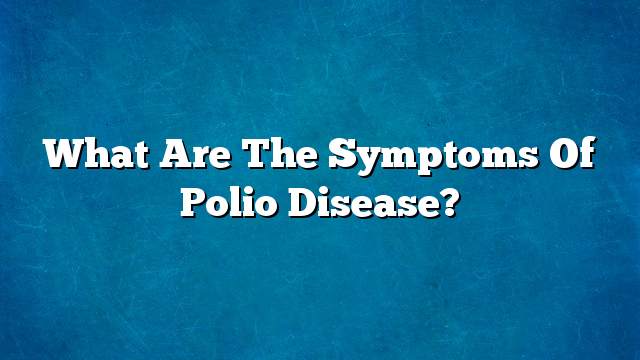polio
Poliomyelitis is a viral disease that invades the nervous system, is transmitted from person to person in several ways, and usually affects children under the age of five. According to the statistics, one out of 200 cases leads to complete paralysis, the virus enters the mouth, To the intestine, and then moves to the lymph nodes, and then to the blood, and then to all members of the body, until it reaches the spinal cord.
Poliomyelitis attacks the nerve cells responsible for the movement of muscles in the front of the spinal cord, and white blood cells pass to the spinal cord in response to the immune system, where the cells are inflamed and destroyed, and the severity of the symptoms of the disease according to the cells that were destroyed, but often coupled with paralysis Lying in the legs, brain, especially in the cerebellum area.
Polio Symptoms
Symptoms of acute disease phase
- Feeling headaches, headaches and headaches.
- General weakness of the body, fatigue.
- High body temperature.
- Sore throat, and a sense of pain in it.
- Nausea and vomiting.
- Back, upper and lower extremities, as well as neck, are pain and stiffness.
- Tension and muscular tension.
- Disorders and problems in speech and speech.
- Breathing problems.
Symptoms of the remaining paralysis phase
These symptoms usually reappear long after 25 years in people who have contracted the virus for the first time, but are more severe and severe than the previous time. The patient is very tired when doing any work, pain, muscle atrophy, During sleep, as well as being unable to tolerate cold weather.
How polio transmission
Polio virus is transmitted by feces, by direct contact, by contact with phlegm (mouth or nose) of infected persons, and by transmission through polluted water and air.
Methods of polio prevention
So far there is no clear cure for poliomyelitis, but Jonas Solk and Albert Sabin have discovered a vaccine that eliminates and disposes of the vaccine. The vaccine is administered in five doses to children under the age of five, as follows:
- First: At the age of 45 days.
- the second: At the age of 3 months.
- Third: At the age of 5 months.
- Fourth: At the age of one and a half.
- Fifth: At the age of four years.
After the previous vaccine proved successful for 30 years, a new, more effective vaccine has recently been developed. It has been adopted in 155 countries to date, including developing countries. The oral vaccine is given to health personnel training. May help the world rid itself of polio, which has destroyed the lives of many over the past centuries.
